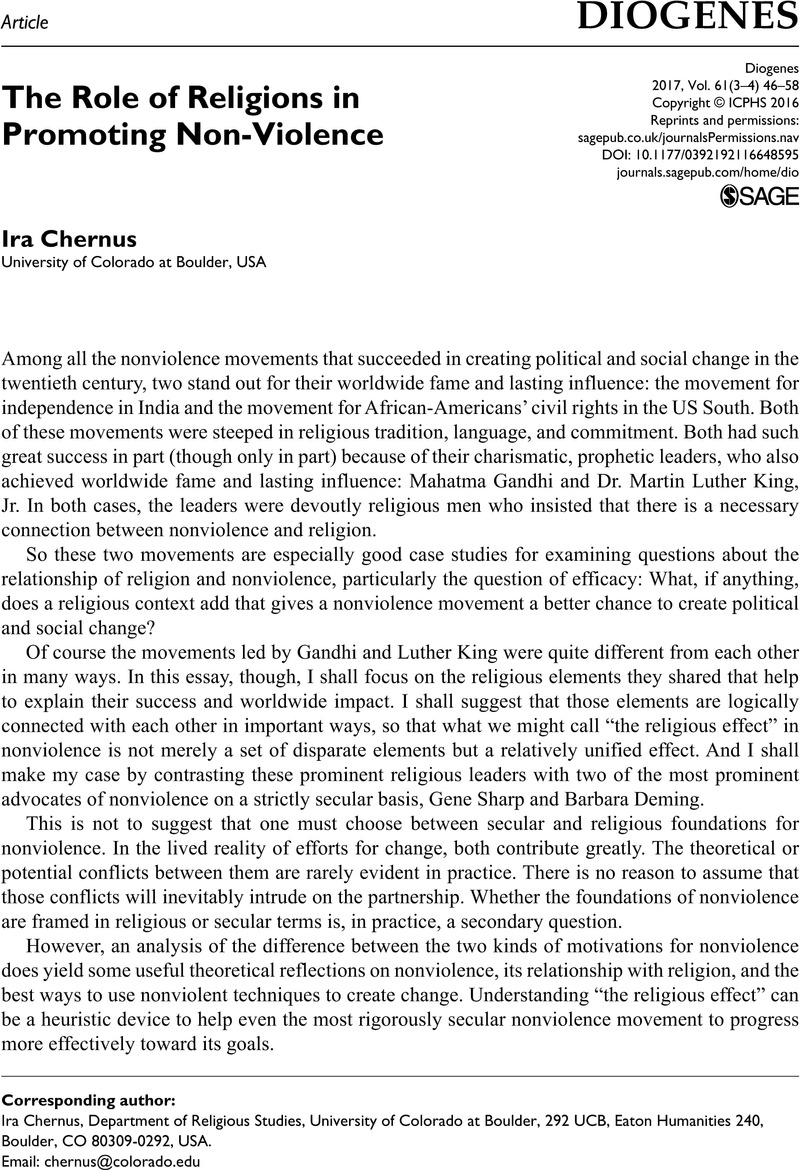No CrossRef data available.
Article contents
The Role of Religions in Promoting Non-Violence
Published online by Cambridge University Press: 01 January 2024
Abstract
An abstract is not available for this content so a preview has been provided. Please use the Get access link above for information on how to access this content.

Information
- Type
- Articles
- Information
- Diogenes , Volume 61 , Issue 3-4: Theories and Practices of Non-Violence , August 2014 , pp. 46 - 58
- Copyright
- Copyright © ICPHS 2016
References
Asad, T (1993) Genealogies of Religion: Discipline and Reasons of Power in Christianity and Islam. Baltimore, MD: Johns Hopkins UPCrossRefGoogle Scholar
Chernus, I (2004) American Nonviolence: The History of an Idea. Maryknoll, NY: Orbis Books.Google Scholar
Dalton, D (1996) Mahatma Gandhi: Selected Political Writings. Indianapolis, IN: Hackett Publishing Company.Google Scholar
Deming, B (1995) On revolution and equilibrium. In Lynd, S and A (eds) Nonviolence in America. Maryknoll, NY: Orbis Books, pp. 405–427.Google Scholar
Iyer, R (1993) The Essential Writings of Mahatma Gandhi. New Delhi: Oxford University Press.Google Scholar
King, ML (1991) A Testament of Hope: The Essential Writings and Speeches of Martin Luther King, Jr. New York: Harper Collins.Google Scholar
Nhat Hanh, T (1993) Love in Action: Writings on Nonviolent Social Change. Berkeley, CA: Parallax Press.Google Scholar
Nhat Hanh, T, Berrigan, D (1975) The Raft is Not the Shore: Conversations Toward a Christian-Buddhist Awareness. Maryknoll, NY: Orbis Books.Google Scholar
Zunes, S, Kurtz, LR, Asher, SB, eds (1999) Nonviolent Social Movements: A Geographical Perspective. Oxford: Blackwell.Google Scholar

